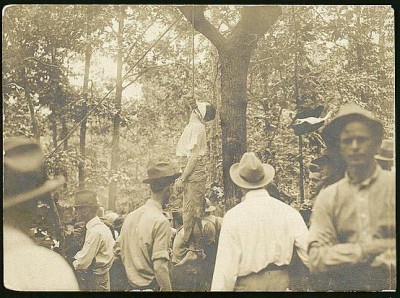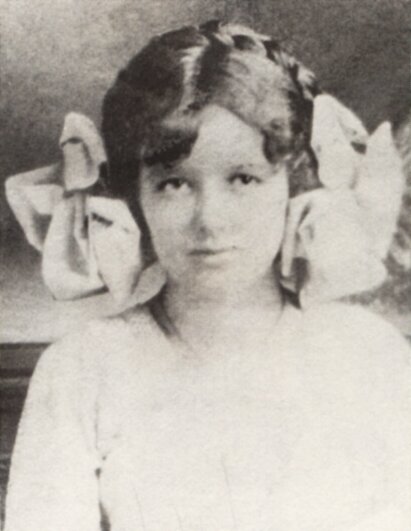|
The Leo Frank Case: The Lynching Of A Guilty Man reviewed by Alexander Baron  *Important editorial note: Though in this review Alexander Baron refers to Leo Frank as “white” in a few places, Majorityrights does not categorize Jews as “white.” The Lynching Of A Guilty Man reviewed by Alexander BaronThe Leo Frank Case subtitled The Lynching Of A Guilty Man is the third volume in a massive study The Secret Relationship Between Blacks And Jews. The first volume was published in 1991, so this is no rush job. It is also clearly a book written with an agenda, but even vested interest can speak the truth. And the obvious vested interest of the Nation Of Islam comes as a welcome counterpoint to the concealed vested interest of the rest of the American media which unthinkingly points the finger at a black suspect in spite of the conviction of a white* one.
 For those not au fait with this notorious case, it began when the body of Mary Phagan was found in the basement of the Atlanta Pencil Factory on April 26, 1913. The young worker had been murdered quite brutally for no apparent reason. The Negro security man who found the body quickly became a suspect - something that is more or less taken for granted nowadays unless the person who finds a body clearly has no connection with the victim, eg a hiker happening upon a skeleton. Newt Lee aside, there was no shortage of more promising suspects, and two soon emerged: the factory manager/part owner Leo Frank, and his gofer Jim Conley. Although Conley was linked to the killing by forensic evidence, in particular two ludicrous notes written from the perspective of the victim, the authorities went with the prosecution of the white* man while Conley testified as an accessory after the fact. Frank was convicted and sentenced to death, but after extensive failed appeals his sentence was commuted. This led to outraged prominent citizens kidnapping him from the State Penitentiary, driving him back to Atlanta, and stringing him from a tree by his neck.  A century and more on there remain two competing narratives; the official and accepted narrative is that Leo Frank was innocent and Jim Conley the villain of the piece. Some might find that surprising as Conley was never indicted for the crime and Frank was never cleared officially in spite of enormous posthumous lobbying by especially the misnamed Anti-Defamation League. This book adheres to the second narrative, that ridiculous as Conley’s tale may have been, he was in fact totally innocent, an accessory only after the fact, having found himself in a truly invidious position, a man of humble estate - in effect a third class citizen - who was told he must follow the orders of his boss or else. In the past quarter to half century, quite a few authors have come out in support of this narrative, but none more impressively than the dedicated Leo Frank website and now this minutely documented book. If anyone believes the fact that the forensic evidence pointing to Conley should have indicted him and him alone, here are two cases from the 1980s that show how wrong this kind of reasoning can be. In March 1984, the black American Sylvester Smith was accused of violating two young girls, cousins. As all the parties involved in this case were black, there was no racial angle. The girls had clearly been interfered with sexually, and unsurprisingly, Smith was convicted. Twenty years later he was cleared on appeal, the shocking truth was that the real perpetrator was a 9 year old boy (who went on as an adult to commit a murder). The girls had been coached by their grandmother to point the finger at Smith to protect him. After her death, they recanted. An equally shocking case that made international headlines was that of Lindy Chamberlain. In 1980 while camping at Ayers Rock, Australia, her baby daughter Azaria was snatched by a dingo. She was convicted of the murder based largely on forensic evidence, but nearly six years later, more reliable forensic evidence was found - the girl’s matinee jacket near a dingo lair.  In the Mary Phagan case, the forensic evidence against Jim Conley (the notes) was outweighed by the forensic and other evidence against his boss, in particular there was evidence that the girl has been murdered upstairs. Almost all the other evidence pointed to Frank, everything from his demeanour to his willingness to point the finger at everyone else including at first Newt Lee. Conley on the other hand remained cool as a cucumber, so either he was a psychopath and a potential future Oscar winner, or he really was telling the truth, however outrageous or crazy his story may have sounded. But when the facts are all in, it wasn’t that outrageous, it wasn’t that crazy, and justice was done in the Deep South, both for Mary Phagan and for a black man whose word many of Frank’s supporters believed should carry no weight at all. A few criticisms are in order: In the Preface, the claim is made that an “unknown posse” lynched Frank, and that he was and remains the only Jew ever lynched in America. The posse was hardly unknown, its members did not bother to hide their faces, and indeed appeared proud of their work. Later in the book it is made clear that their identities were in no way secret. The doubtful honour of being the first Jew lynched in America appears to belong to Samuel Bierfield in 1868, but neither he nor Frank were lynched because they were Jews. Frank was hardly the most important Jew in the Deep South as claimed; he was certainly far from the wealthiest, and was the New York Times the world’s most important newspaper? The most important in America maybe, but not more important than the London Times. And was World War One raging in 1913? The reason the crime was committed and how it was committed are both laid out in impressive detail, as are the attempts by Leo Frank to point the finger of suspicion initially at Newt Lee, and then at anyone else without mentioning the fact that Conley was at the pencil factory at the material time. Why would he not do that? The only logical reason is that he didn’t want Conley to open his mouth, and once Conley did, he too had to be accused. The book raises too the interesting speculation that Frank was considering murdering Conley – the only direct witness – as well. While Conley took the stand – of necessity – Frank testified without cross-examination, a privilege allowed in a Georgia courtroom. Conley was basically unshaken by the intensive cross-examination of one of the finest legal minds in America. Does that mean he was sly, cunning, psychopathic, or simply telling an outrageous truth? What is a defense attorney to do when his client is clearly losing the case? He can resort to innuendo and epithets, which is what Frank’s legal team and supporters did. The alleged pogrom against Frank was totally manufactured by them, something that was echoed in a Los Angeles courtroom eight decades later when facing even more damning evidence the legal team for OJ Simpson resorted not so much as to claims but innuendo that their client had been fitted up simply because he was a wealthy and famous black man. This does not mean there was no racial bigotry either in the courtroom or outside it during the entire legal process, indeed this book stresses the disgusting anti-black rhetoric of Frank’s lawyers, something that could hardly have helped their client. Would even a die-hard white supremacist of that bygone age really have believed a Negro incapable of telling the truth and a white man incapable of lying, especially when the evidence against the latter was apparently so compelling? Imagine you were sitting on a jury and you heard this in closing argument “They say that nigger couldn’t lie. Gentlemen, if there is any one thing that nigger can do it is to lie.” Would it make you more or less favourable to the defendant? Most telling is the attitude of the good people of the Deep South to Conley after the trial. Seven years after the conviction of Leo Frank, a white girl in the Northern city of Duluth claimed to have been gang-raped by six black circus workers. This lie by Irene Tusken led to three men being lynched. That and the lynching of Leo Frank show the fate Conley could have expected if there had been a mere suspicion that he had been anything more than an accessory after the fact, yet no one laid a finger on Conley, and indeed although he disappeared into obscurity, there is no evidence that any woman or girl of any race ever accused him of the slightest sexual impropriety. Had Conley really murdered Mary Phagan, no one would have been surprised if he had gone on to commit another sex crime or serious assault, which he never did. That in itself speaks volumes. Then there is the curious and clearly bogus confession of Alonzo Mann, who came forward in 1982 with the extraordinary claim that he had witnessed Conley disposing of the victim’s body but had kept quiet about it because the Negro threatened him. Mann, who was a mere boy at the time of the murder was of course very old by this time. Conley is believed to have died in 1962, so if there had been a nanogramme of truth in Mann’s claim, would he have waited another twenty years? This book shows this encounter with Conley is not the only imaginary encounter Mann remembered. He also recalls a five hundred strong mob that was not only chanting “Kill the Jew. Kill the Jew” but was armed as if to storm the courthouse. It is usually tin foil hat territory to see a hidden hand behind actions like this, but whether or not Mann was put up to these fanciful claims by a certain crypto-Jewish organisation, there can be absolutely no doubt that the ADL and more generally Organised Jewry have gone to extraordinary lengths to absolve one of their own from this dreadful crime. If Mary Phagan had indeed been murdered by a Negro who had confessed to the crime, would any black organisation have given it a second thought? A typical response would have been “There have been plenty of white child murderers in the Deep South”. But time and time and time again we see the same predictable machinations to ensure that no one ever points a finger at the Jew – any Jew – however guilty the criminal may be. The reality is that Jewish establishments worldwide are too cohesive for their own good, and in the eternal quest to root out the tiniest shred of anti-Semitism, they create a great deal more hate against Jews than they alleviate.  A young White girl, Mary Phagan, was victim of a senseless murder; and evidence points to a non-White (a Jewish man) having done it. A young White girl, Mary Phagan, was victim of a senseless murder; and evidence points to a non-White (a Jewish man) having done it.A couple more criticisms about The Leo Frank Case are in order. There are a few insignficant errors in the book, as already pointed out, but what it seeks to do is to replace one victim narrative with another, albeit a far more plausible one. Yes, Jews have suffered persecution throughout history – who hasn’t? – but the accepted narrative that in the segregated Deep South of 1913 they were somehow lower down the food chain than blacks is too stupid to comment on. By the same token, in spite of occasional lynchings – which claimed white victims too – blacks were not outlaws, and although they often faced a harsher justice, there was always at least the appearance of fairness towards them. What should never be forgotten here is that a young (white) girl was the victim of a senseless murder, and that she was the one who deserved justice first and foremost. This book is also a thinly veiled attack on capitalism, with the inference that socialism would be better for blacks and everyone else. This is a curious position for anyone associated with the Nation Of Islam to take because Louis Farrakhan knows precisely what is wrong with capitalism, and at times in his speeches has referenced – albeit without citation – the works of such authors as Gary Allen and G. Edward Griffin, namely that the Creature from Jekyll Island rather than free enterprise is the real problem. Historically Jews have been associated with capitalism as much as white Gentiles, and with banking, so much so that a vast conspiracy literature has grown up around the latter, much of it associated with the name Rothschild. But neither Jews nor whites were solely responsible for the institution of slavery, nor for the suffering of the masses in centuries past. Leaving all that and any other agendas aside, whatever motives its authors may have, this book demonstrates more clearly than any other before that the right man was tried and convicted for this horrible murder. Crypto-Jewish and pseudo-Jewish organisations should find something else to whine about, because the only anti-Semitism in this case was the anti-Semitism they’ve manufactured themselves, but sadly that is a lesson they’ve not learned in the past two thousand years, and probably won’t in the next two thousand. [The above review was commissioned by an American researcher who wanted me to publish it on Amazon. Don’t ask me why. I did so, and it was rejected by both the Amazon US and Amazon UK sites. No reason was given, but it is just too long; I’ve published far more controversial stuff on Amazon before. I edited it down, but it was still too long. What you have read here is the final, full version]. Comments:2
Posted by Tomislav on Tue, 27 Nov 2018 06:13 | #
Post a comment:
Next entry: Attacks on Nigerian students in India
|
|

Existential IssuesDNA Nations
|
Posted by anton on Sat, 09 Jun 2018 03:14 | #
I cannot understand how they are not as guilty as Nazis